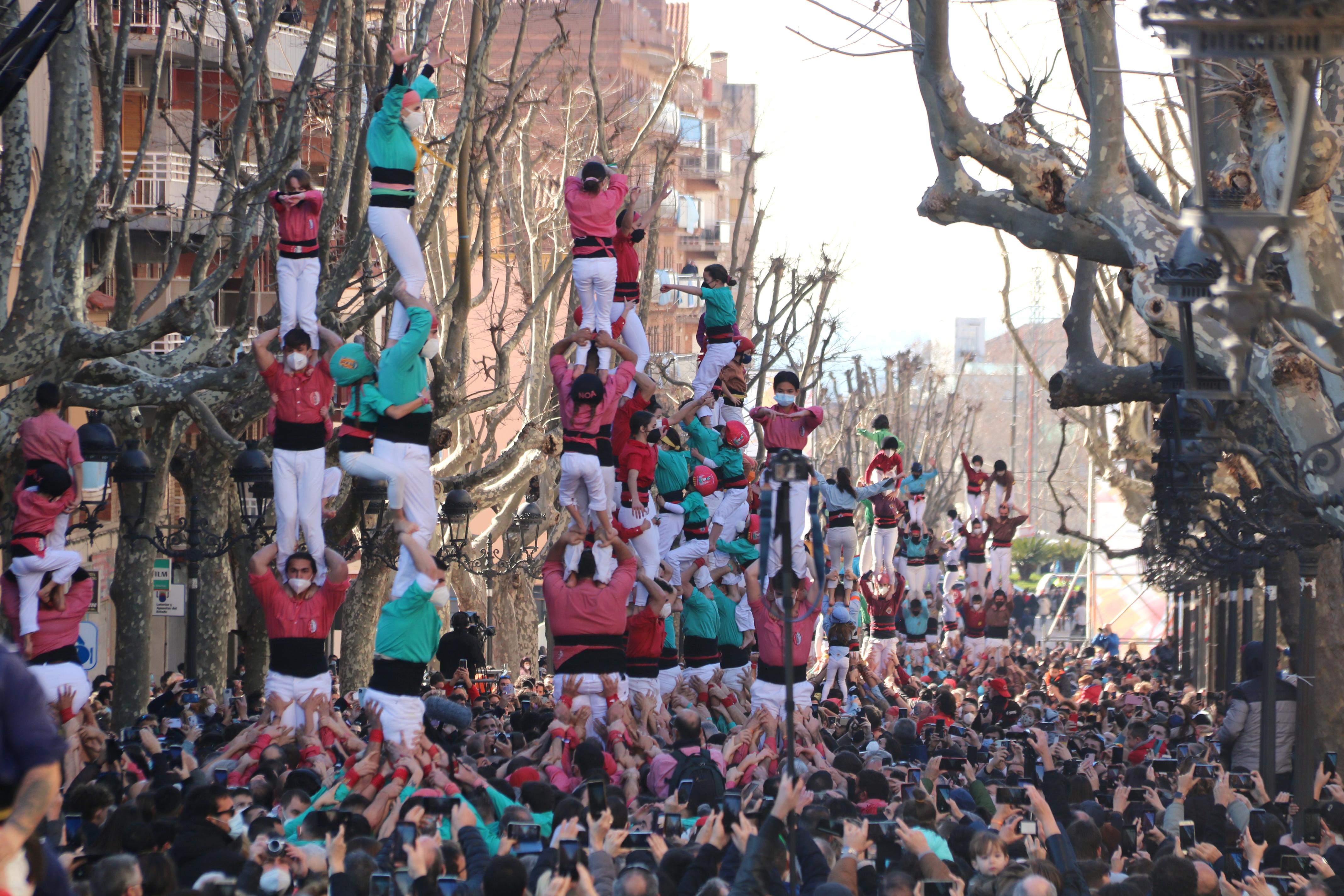Catalonia’s human towers hope successful Valls event signals turning point
Over 3,000 people take part in one of the biggest "Castellers" contests since the pandemic

The southern town of Valls welcomed 3,290 ‘castellers’ to celebrate its Decennalia festival of Catalonia’s traditional human towers, ‘castells’.
The event, one of the biggest since 2015 and since the pandemic first hit, still felt short of expectations. 8,400 people and 83 ‘colla’ groups were supposed to take part in the festival, but the virus forced several ‘colles’ to withdraw, and in the end, only 28 were able to participate.
"Hopefully today is the long-awaited start we've been waiting for. We’ve said plenty of times ‘now is the start, now is the start…’ but I think today it really is," casteller Albert Martínez said to the Catalan News Agency (ACN).
Some ‘colles’ urged authorities to give them public aid to make sure ‘castells’ can still take place as "it is really difficult to go ahead as we have been heavily impacted by the pandemic," Cisco Benet, a casteller from Vilafranca town told ACN.
Face masks were mandatory during the event and some groups had to test their participants several times before the contest.
Back in April 2020, the Coordinator of Catalonia's Colles Castelleres (CCCC), the organization that represents the country's human tower groups, sounded the alarm.
"We can't imagine building human towers in face masks or having to keep a certain distance. In the world of 'castellers' these preventive measures are not applicable," Sergi Font, vice president of the CCCC and board member of the Marrecs 'colla' in Salt, said at the time.
However, now the use of face masks doesn’t seem to be a problem.
Human towers, a UNESCO heritage
Declared Masterpieces of the Oral and Intangible Heritage of Humanity by UNESCO in 2010, Catalonia's human towers are one of the country's most unique customs.
The tradition first documented in the 17th century sees large groups - known as 'colles' - forming tiers of differing numbers of people standing on the shoulders of those below them.
A human tower is only complete once a child called the 'enxaneta', who can be as young as five, clambers to the very top of the structure and raises their arm.
The towers are a common - and breathtaking - sight in towns squares all over the country, where they are built during local festivals to the sound of traditional 'gralla' flutes and drums.